Illuminating the Path: A Deep Dive into LED Headlight Beam Patterns
Nighttime driving is no small feat, especially when fatigue, stress, or the irresponsible choices of others are in play. But what many motorists grapple with is the glaring light emitted by LED headlight bulbs. Those piercing rays coming from the opposite lane can be a real strain on the eyes and are prime culprits in causing accidents.
Products are available — click below to view them!
SEE DETAILS ON EBAYTo secure your safety and that of your fellow drivers, it’s imperative to equip your vehicle with top-tier LED headlight bulbs. However, if not properly aimed, they can be more of a hindrance than a help.
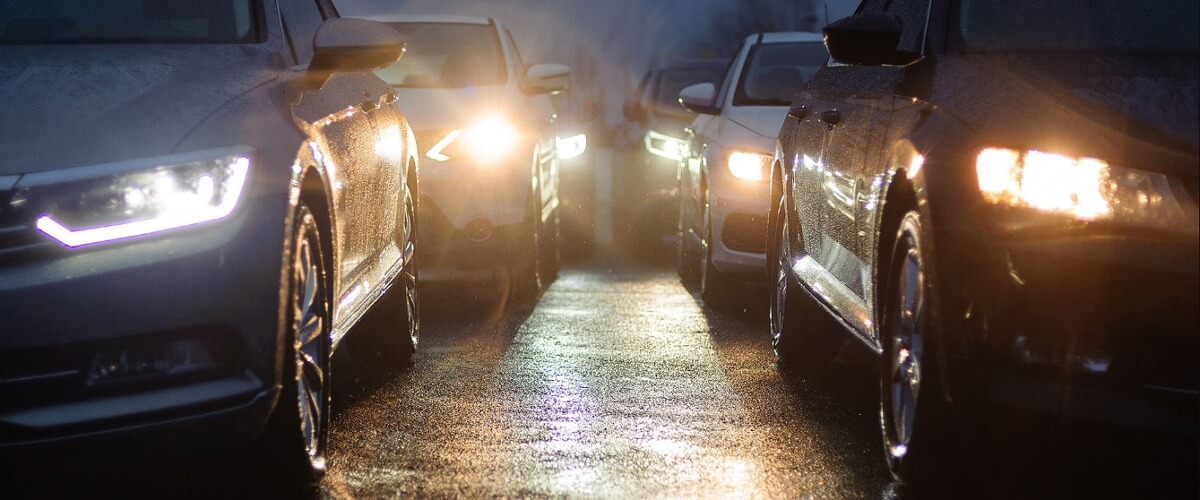
But what influences the light beam patterns of LED car lights? How can you fine-tune the bulbs for impeccable illumination? And where can you find the best LED headlight bulbs?
Buckle up and get ready to become an enlightened driver!
Factors Affecting LED Light Beam Patterns [The Quintessential Five]
In yesteryears, cars donned a monotonous range of headlights, but today’s auto world is a smorgasbord of technological advancements. Two major headlight housing types are projector and reflector.
1. The Headlight Housing Evolution
LED bulbs nestled in projector housings are akin to stage actors under a spotlight. With lenses magnifying the brightness and a cutoff shield directing the beams, they create a precise, focused light that stays grounded – no glare, just pure clarity.
On the flip side, reflector housings cast a wider net, bathing more surface area in light. But beware: improper alignment can result in a glaring problem. If you’re curious about the nitty-gritty of projector versus reflector, we have a treasure trove of information in our previous post.
2. The Tale of LED Chips
The almighty LED chip is a maestro in creating light beam patterns. Two crowd favorites are the COB and Flip Chip.
- COB Chip – As pioneers in the automotive LED world, COB chips are adored for their affordability and ample brightness. They produce even lighting but fall short in penetration, resulting in a softer beam.
- Flip Chip – As successors to the COB, Flip Chips boast tiny lighting points which create bright, concentrated light beams. Headlight bulbs with Flip Chips will reward you with sharp cutoffs on low beams and concentrated intensity on high beams.
3. The Choreography of Lamp Beads
In the realm of automotive illumination, LED lamp beads play a central role. Their arrangement is akin to a carefully choreographed dance that defines not only brightness but also light beam patterns.
For instance, Flip-chip LED bulbs generally have rectangularly arranged lamp beads, yielding a wider light beam pattern. Square arrangements, however, focus the light, enabling you to peer farther into the night.
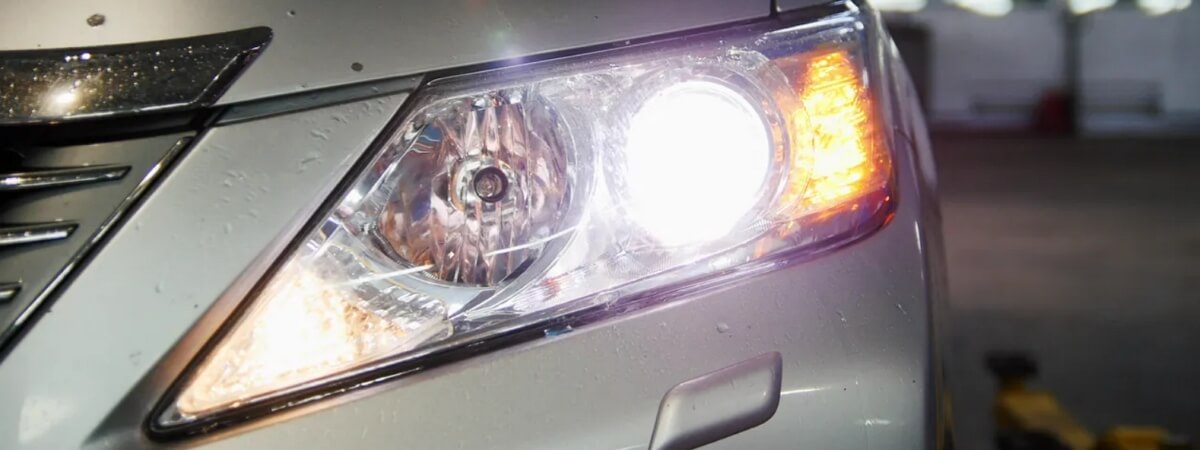
4. Harmony in LED Spacing
The spacing between LEDs should mirror that of the original filament. A bulb with a thick stem or multiple lighting points may result in unfocused, scattered beams, so steer clear if you value precision.
5. A Flawless Installation
Imagine wearing your glasses upside down. Not a pretty picture, right? Similarly, incorrect installation can throw your LED headlight beams into disarray. Diodes should be positioned horizontally at 3 and 9 o’clock to maintain harmony in your light show.
How to Adjust Headlight Beam Patterns [Tweaking the Lights]
Incorrectly installed LED bulbs can be a menace, scattering beams and blinding oncoming drivers. Single filament bulbs need side-to-side orientation, while dual-beam bulbs require precise alignment of diodes and shields. High-quality LED bulbs usually feature intuitive mounts to assist with installation.
- For single filament bulbs, it’s essential that the LED chips are arranged in a side-to-side configuration. This means one side of the LED should be positioned at 3 o’clock, and the other side should be at 9 o’clock. This alignment ensures an even and focused 360° distribution of light within the housing.
- In contrast, some LED headlight bulbs feature dual-beam functionality with two diodes on each side, where one diode is placed slightly higher than the other. When installing these dual-beam headlight bulbs, make sure that the marginally elevated diode is on the upper side of the bulb. Additionally, these bulbs typically have a shield at the bottom that helps to direct the light accurately and prevent glare.
- High-quality LED headlight bulbs usually come with standard mounts, which are designed to facilitate proper installation in the headlight housing. If you’re uncertain about how to install the bulbs correctly, we recommend watching our installation guide video for a step-by-step walkthrough.

How to Acquire the Ideal LED Headlight Bulb [The Searchlight]
As a good example of a quality LED headlight bulb, we’ll take an LED bulb by Fahren. We like how it works, we have checked its beam pattern and it is good enough for the vehicles that we’ve installed it into. Yet, you are welcome to check out the list of characteristics we describe and see, what makes a really good LED bulb. Next, just use this information for further shopping for any other headlight bulbs you like. The main thing is the list of features you want to find in the perfect LED bulb for your car, truck, or SUV.
Fahren Forenner LED Headlight Bulb – The Gold Standard
- Beam Brilliance: Thanks to impeccable lamp bead arrangements, the Fahren Forenner LED bulb boasts a wider, more concentrated beam. The square center configuration allows for a focused beam, while additional beads ensure uniform distribution.
- Enhanced Luminosity: Equipped with 6×60 MIL flip-chips, the Forenner LED bulb shines brightly with an output of 120W, 13,000 lumens, which is four times that of halogen bulbs. Night drives become a pleasure with 6,500K pure white illumination.
- Cool Under Pressure: The Forenner’s dual-copper heat pipes, aluminum heat sink, and high-speed silent fan work in harmony to dissipate heat, ensuring longevity and performance.
- Synchronized Perfection: The intelligent Canbus driver ensures flawless integration with 98% of vehicle computer systems, without errors or radio interference.
- Produced by Stellar Fahren: With over 16 years in the automotive LED lighting sector, Fahren is synonymous with quality and innovation. The Forenner LED headlight bulb exemplifies Fahren’s dedication to excellence. With Fahren, you not only get premium performance but also a 2-year warranty!
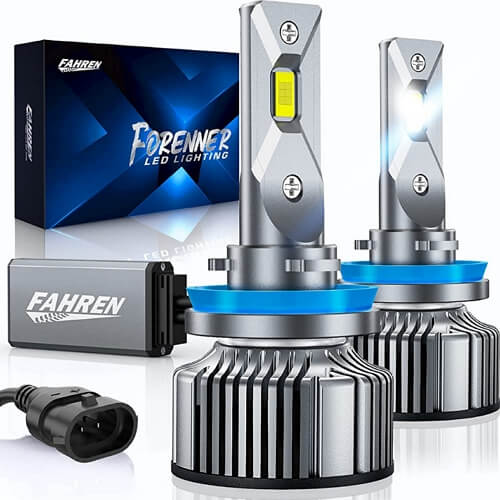
Final Thoughts
Upgrading to LED headlights doesn’t have to be as mystifying as a foggy night. Just ensure your bulbs are aligned to perfection for the safety of all on the road. With the Fahren Forenner LED headlight bulb, the road ahead is not just brighter but safer and clearer for everyone involved. Light the way with confidence!
ABOUT
 Steven is a certified mechanic and technical writer at Halo Headlights. Steven is excited about fast cars, loud music, and car mods. On a yearly basis, he visits SEMA, as well as other car shows. He has installed thousands of HID and LED kits and done hundreds of custom headlight retrofit projects. Now, he is ready to share his experience with Halo-Headlights.com readers. If you have questions for Steven, just ask your question using the form.
Steven is a certified mechanic and technical writer at Halo Headlights. Steven is excited about fast cars, loud music, and car mods. On a yearly basis, he visits SEMA, as well as other car shows. He has installed thousands of HID and LED kits and done hundreds of custom headlight retrofit projects. Now, he is ready to share his experience with Halo-Headlights.com readers. If you have questions for Steven, just ask your question using the form.
Questions and Answers
Q: What is an LED headlight beam pattern?
A: An LED headlight beam pattern refers to the spread of light that the LED headlights emit on the road. It includes aspects like the width, height, and intensity of the light beam. A well-optimized beam pattern illuminates the road adequately without causing glare to oncoming traffic.
Q: Why is the beam pattern important?
A: The beam pattern is crucial for safe driving, especially at night. A proper beam pattern ensures that the road ahead is well-lit, allowing the driver to see obstacles and signs clearly. At the same time, it minimizes glare for oncoming drivers, reducing the risk of accidents.
Q: What is the difference between a projector and a reflector headlight housing?
A: Projector headlight housings contain a lens that focuses the light beam, making it more direct and less scattered. They often have a sharp cut-off line. Reflector housings, on the other hand, use mirrors to reflect and direct the light. This can sometimes cause a more scattered light pattern which might be less focused than projector housings.
Q: How does the headlight housing affect the LED beam pattern?
A: In projector housings, LED headlights tend to produce a more focused and sharper beam pattern. In contrast, reflector housings can cause the LED beams to scatter more and may require careful alignment to prevent excessive glare and ensure adequate road illumination.
Q: What are the standard beam pattern types for headlights?
A: The two standard beam patterns are low beam and high beam. Low beam is used for normal driving conditions and is designed to cast a moderate and downward light to avoid blinding oncoming drivers. High beam provides a bright, long-range light for improved visibility, used in rural or poorly-lit areas where oncoming traffic is minimal.
Q: How do I properly align my LED headlights for the best beam pattern?
A: To properly align your headlights, park your car facing a wall, about 25 feet away. Mark the center of the headlights on the wall with tape. Turn on the low beams, and adjust the headlights so that the most intense part of the light is just below the tape line. Consult your vehicle’s manual for specific adjustment instructions.
Q: Is there a difference in beam patterns among different LED chip types?
A: Yes, different LED chips can produce different beam patterns. For instance, COB (Chip On Board) LEDs usually create a broad and diffused light, whereas newer technologies like SMD (Surface Mounted Device) or Flip Chips produce a more focused and intense beam pattern.
Q: Can weather conditions affect the effectiveness of my LED beam pattern?
A: Absolutely! Fog, rain, and snow can scatter the light from LEDs. Fog lights, usually mounted lower and having a wide, flat beam pattern, can be more effective in such conditions as they reduce the amount of light reflected back by the weather elements.
Q: What is a ‘cut-off line’ in LED headlight beam patterns?
A: A cut-off line is a distinct boundary at the top of the light beam pattern, above which there is minimal light. This feature is to prevent the light from glaring into the eyes of oncoming drivers. It’s more common in projector housings which are designed to focus the beam more precisely.
Q: What should I look for in an LED bulb to ensure a good beam pattern?
A: Look for LED bulbs that are compatible with your headlight housing type (projector or reflector). Also, consider bulbs with adjustable collars allowing rotation, which can help in optimizing the beam pattern. Ensure they are from a reputable brand known for high-quality automotive lighting.
Q: Can I use my high beams all the time for better visibility?
A: No, it’s not advisable to use high beams all the time as they can blind oncoming drivers or reflect too much glare in foggy conditions. High beams should be used sparingly, mainly in rural or poorly-lit areas where there’s little to no traffic.
Q: Are there any legal regulations regarding LED headlight beam patterns?
A: Yes, there are legal regulations in many countries and states that specify requirements for headlight beam patterns, intensity, and alignment. It’s important to ensure that your LED headlights comply with these regulations to avoid fines and ensure safe driving. Check your local laws or consult a professional if you are unsure.

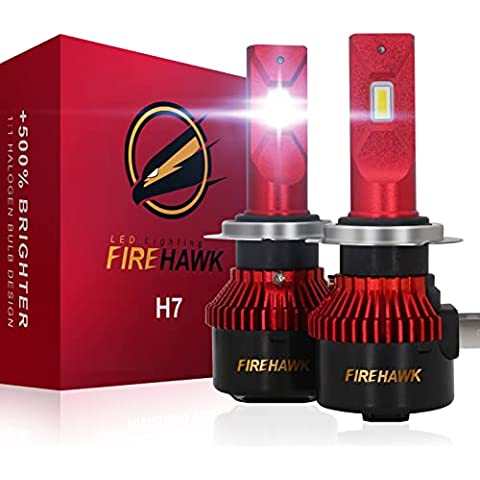
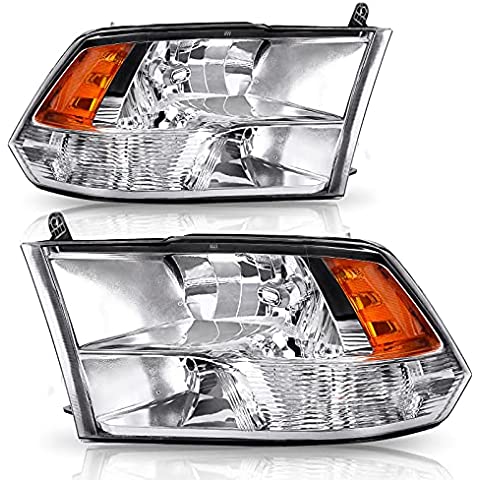
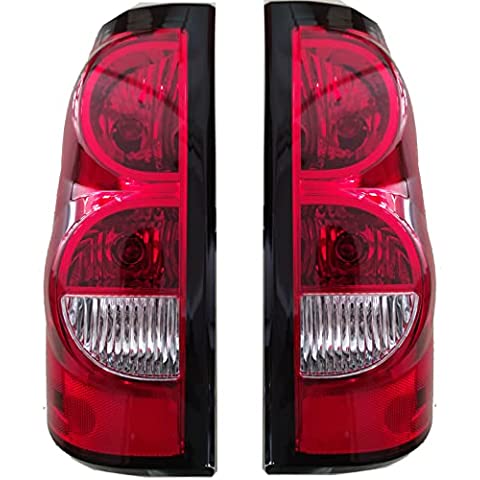

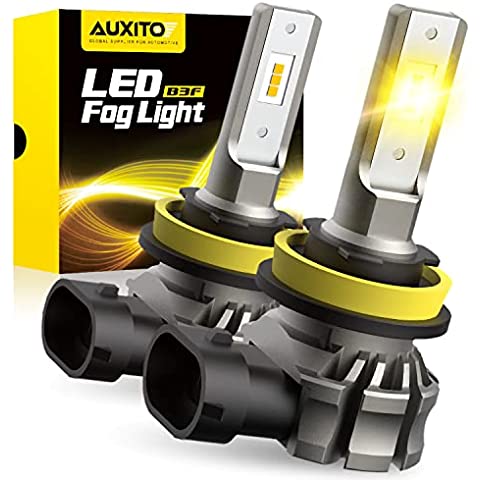
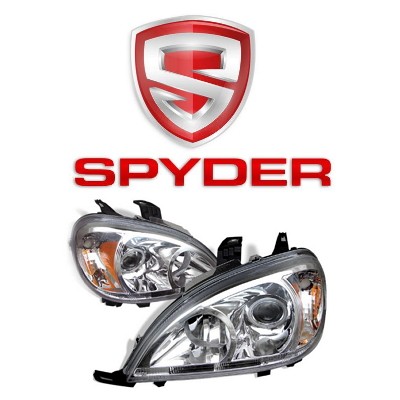
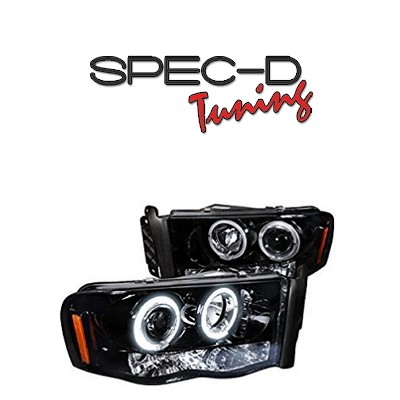
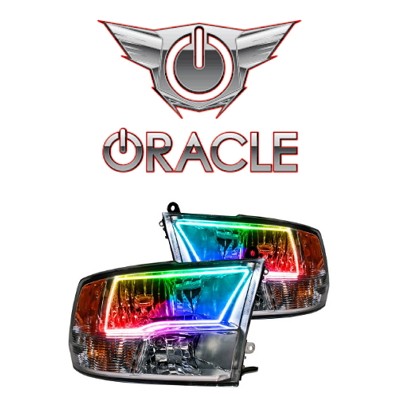
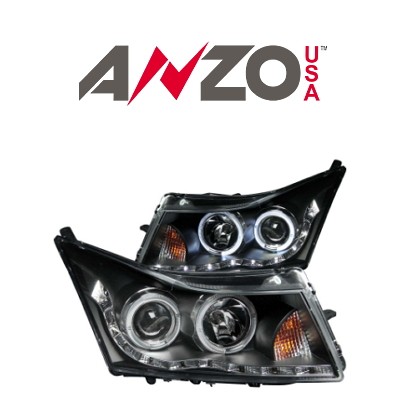

Hi, I just bought a car with LED headlights & I’m having to return it. I drive on dark winding roads & the LED headlight cut-off line leaves the road ahead pitch black, I can’t see the turns, cross streets, or bicycles. I’m told to just leave the “auto high beams” on but I don’t want to be that jerk who blinds people sitting in their living rooms & anyone walking along the road. I also would rather not buy a 6 or 7 year old car with halogens to safely drive my roads. Are there types of LED headlights that show the road ahead on low beams? without blinding oncoming cars? Thanks for any input.